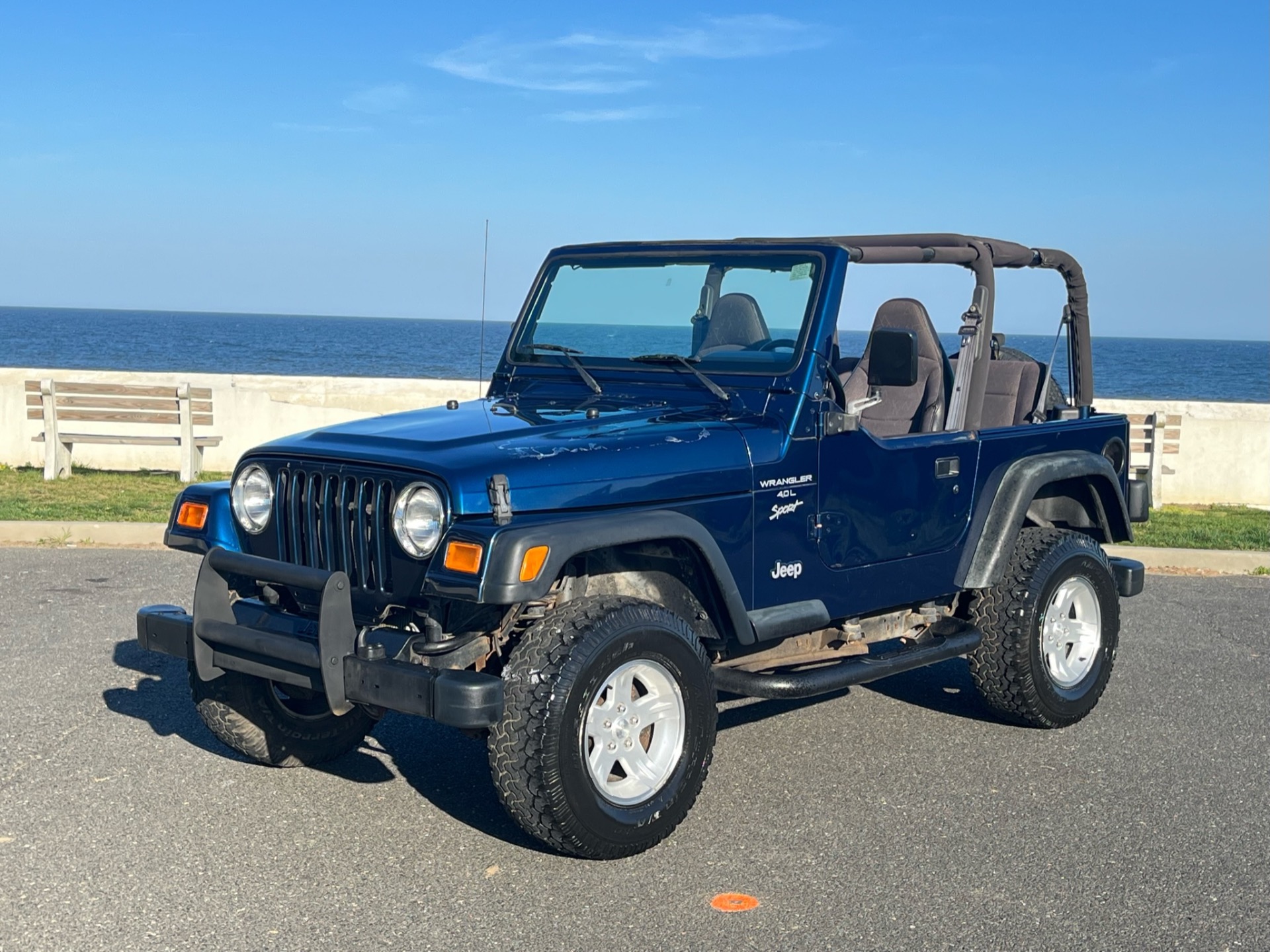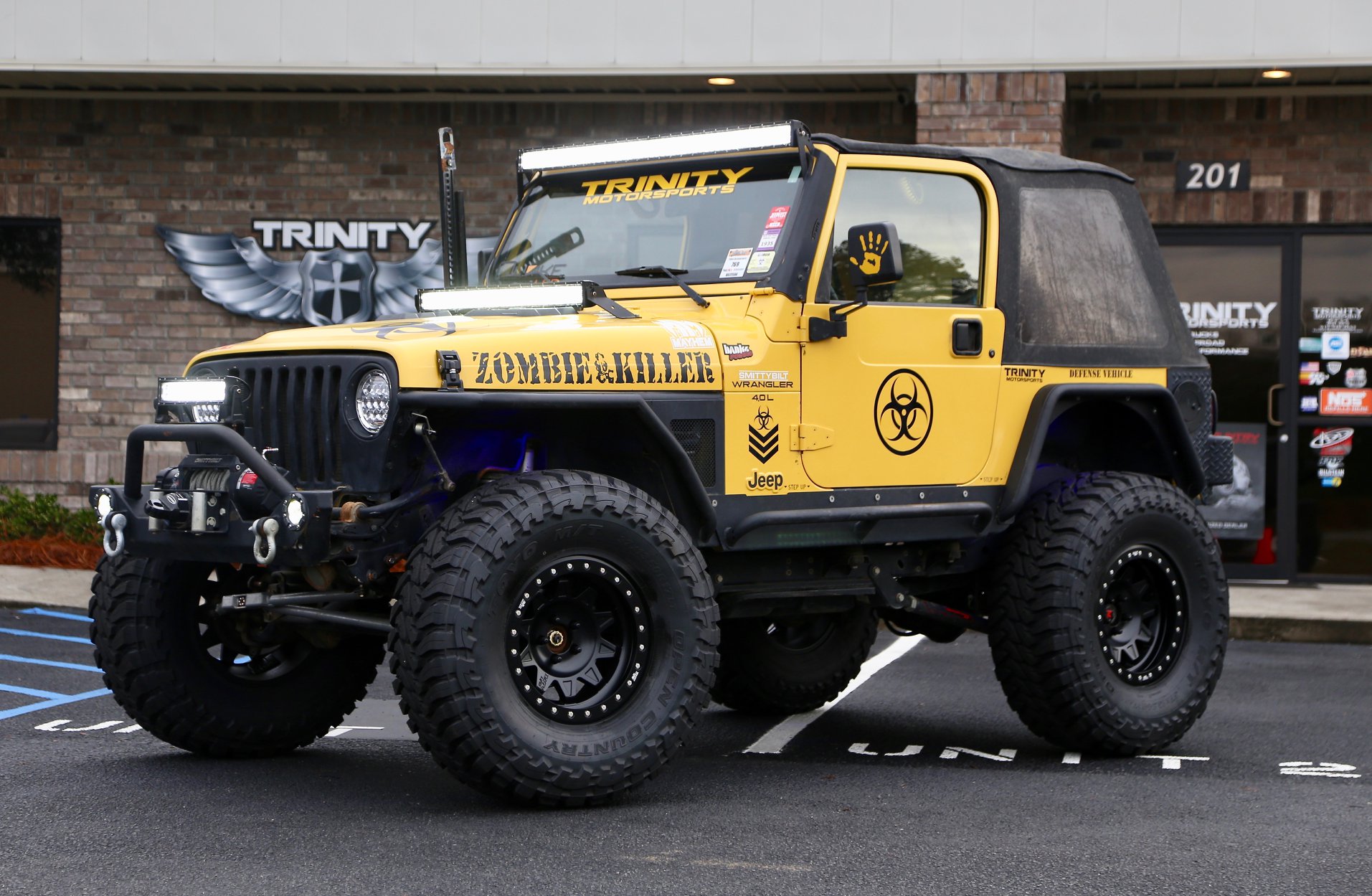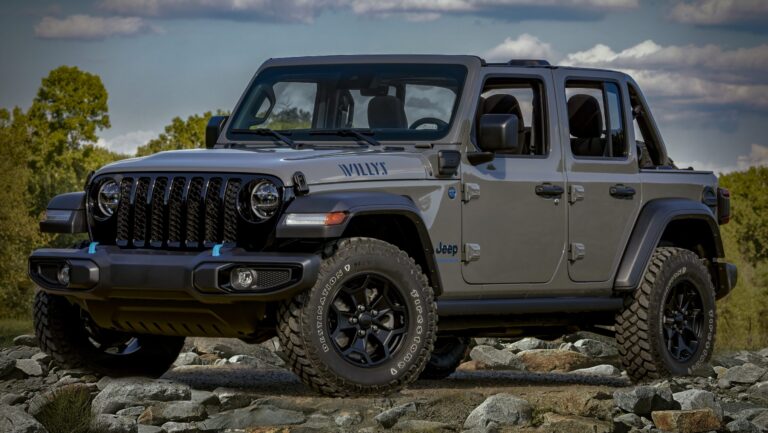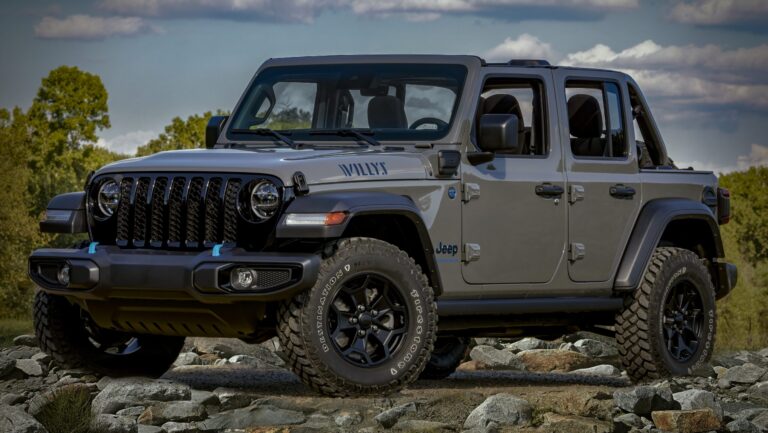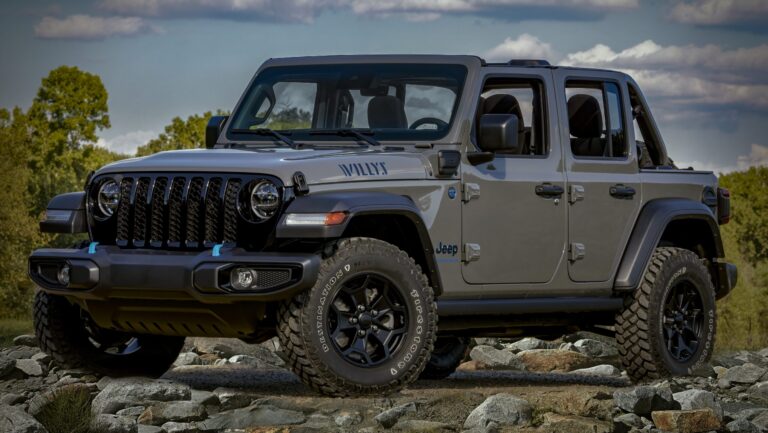Wrangler Jeep TJ: The Quintessential Off-Roader Reimagined
Wrangler Jeep TJ: The Quintessential Off-Roader Reimagined jeeps.truckstrend.com
Introduction: The Enduring Legacy of the TJ
In the pantheon of iconic off-road vehicles, few command the reverence and affection showered upon the Wrangler Jeep TJ. Produced from 1997 to 2006, the TJ generation of the legendary Jeep Wrangler represents a pivotal moment in the vehicle’s evolution. Following the controversial square-headlight YJ, the TJ boldly returned to the classic round headlights, instantly appealing to purists. More significantly, it introduced coil spring suspension to all four corners, a revolutionary departure from the leaf springs that had defined Wranglers for decades. This single engineering change transformed the Wrangler’s ride quality and off-road articulation, making it not just a formidable trail machine but also a significantly more comfortable daily driver. The TJ didn’t just inherit the Wrangler’s rugged DNA; it refined it, cementing its place as arguably the most balanced and beloved generation for both hardcore off-road enthusiasts and casual adventurers alike. Its blend of classic aesthetics, modern comfort (for its time), and unparalleled modifiability has ensured its enduring relevance and a passionate community that keeps these iconic Jeeps on the road and trail today.
Wrangler Jeep TJ: The Quintessential Off-Roader Reimagined
The Heart of the TJ: Design and Engineering Innovations
The Wrangler Jeep TJ wasn’t just a facelift; it was a comprehensive re-engineering that built upon the Wrangler’s heritage while addressing its shortcomings. At its core, the TJ retained the body-on-frame construction and solid axle setup that are fundamental to Jeep’s off-road prowess. However, the most significant innovation was the Quadra-Coil suspension system. Replacing leaf springs with long-travel coil springs at each wheel provided substantially improved articulation, allowing the axles to flex independently over uneven terrain, maintaining tire contact and traction. This also led to a dramatically smoother ride on pavement, making the TJ much more agreeable for daily commuting compared to its leaf-sprung predecessors.
Under the hood, the TJ offered two primary engine choices: the venerable 4.0-liter AMC 242 inline-six-cylinder engine and the more economical 2.5-liter AMC 150 inline-four-cylinder engine. The 4.0L, known for its bulletproof reliability, ample torque, and simple design, quickly became the engine of choice for most enthusiasts due to its robust performance on and off-road. Paired with either a manual (AX-5 for 2.5L, AX-15/NV3550/NSG370 for 4.0L) or automatic (32RH/42RLE) transmission, the powertrain combinations were proven workhorses.
The TJ’s chassis boasted a 93.4-inch wheelbase (for the standard TJ), offering an excellent balance of maneuverability on tight trails and stability. It typically came with a robust Dana 30 front axle and either a Dana 35 or, more desirably, a Dana 44 rear axle (standard on Rubicon models and optional on others). The introduction of the Rubicon trim package in 2003 was another landmark. This factory-equipped, trail-ready model featured front and rear Dana 44 axles, air-actuated Tru-Lok locking differentials, a 4:1 low-range Rock-Trac transfer case, and 31-inch tires, setting a new standard for off-the-showroom-floor capability.
Why the TJ Remains a Legend: Benefits and Appeal
The enduring popularity of the Wrangler Jeep TJ isn’t just nostalgia; it’s rooted in a combination of tangible benefits and an intangible allure that few vehicles can match.
- Unrivaled Off-Road Prowess: Thanks to its short wheelbase, excellent approach and departure angles, solid axles, and especially its coil-spring suspension, the TJ is an absolute beast on the trails. It can tackle challenging terrain with ease, making it a favorite for rock crawling, mud bogging, and overland adventures.
- Legendary Modifiability and Aftermarket Support: The TJ is a blank canvas for customization. The aftermarket industry for TJs is colossal, offering everything from basic lift kits and larger tires to complete engine swaps, axle upgrades, and interior refinements. This allows owners to tailor their Jeep precisely to their needs, whether it’s a daily driver with a mild lift or a highly specialized rock crawler.
- Simplicity and Reliability: The TJ largely predates complex electronics and intricate systems found in modern vehicles. This simplicity translates to easier maintenance and repair, often allowing owners to perform work themselves with basic tools. The 4.0L engine, in particular, is renowned for its longevity, often exceeding 200,000 or even 300,000 miles with proper care.
- Timeless Aesthetic: The TJ’s design perfectly blends classic Wrangler cues (round headlights, removable doors, fold-down windshield) with a slightly more refined stance. It’s instantly recognizable and has a rugged, adventurous appeal that never goes out of style.
- Strong Community and Resale Value: Owning a TJ means joining a vibrant, supportive community of enthusiasts. From online forums to local trail groups, help, advice, and camaraderie are always available. Furthermore, TJs hold their value exceptionally well, often appreciating in price due to their desirability and diminishing supply of well-maintained examples.

Key Considerations Before Buying a TJ
While the TJ is an incredible vehicle, purchasing a used one requires careful consideration to avoid common pitfalls.
- Rust, Rust, Rust: This is by far the biggest concern. Frame rust, particularly around the skid plate, control arm mounts, and rear sections, can be severe, especially in areas where roads are salted. Thoroughly inspect the frame from front to back, tapping with a hammer to check for weak spots. Body rust can also appear on fenders, rocker panels, and the floorboards.
- Maintenance History: Given their age, a complete and well-documented maintenance history is crucial. Look for evidence of regular oil changes, fluid flushes, and proactive repairs.
- Engine and Drivetrain Health:
- 4.0L Engine: Check for oil leaks (especially from the rear main seal or valve cover), coolant leaks, and listen for unusual noises. Ensure it starts easily and idles smoothly.
- 2.5L Engine: While reliable, it’s underpowered for many and can feel sluggish.
- Transmissions: Test shifting (manuals for grinding, automatics for smooth engagement).
- Transfer Case: Ensure it shifts into 4-high and 4-low without issue.
- Axles: Check for leaks around the differential covers and listen for any grinding or whining noises, which could indicate worn gears or bearings.
- Common TJ-Specific Issues:
- Dana 35 Rear Axle: Standard on many non-Rubicon TJs, the Dana 35 is known to be weaker than the Dana 44, especially if larger tires and aggressive off-roading are planned. Look for signs of stress or consider a swap if serious off-roading is in the future.
- Crank Position Sensor (CPS): A common failure point that can cause no-start or stalling issues.
- Heater Core: Can clog or leak, leading to poor heat or a sweet smell inside.
- Steering Play: Check tie rod ends, ball joints, and steering box for excessive play.
- Pre-Purchase Inspection (PPI): Always have a qualified mechanic (preferably one familiar with Jeeps) perform a thorough PPI. This can save you thousands in unexpected repairs down the line.

Customization and Upgrades: Unleashing the TJ’s Potential
One of the greatest joys of TJ ownership is the endless potential for customization. Whether you’re aiming for a mild street build or an extreme rock crawler, the TJ can be transformed.
- Lift Kits: The most common first modification. Suspension lifts (2-4 inches) provide increased ground clearance and allow for larger tires, enhancing off-road capability. Body lifts (1-2 inches) are simpler and cheaper but don’t increase ground clearance. Practical advice: Research thoroughly. A 2-3 inch suspension lift is often ideal for balancing off-road performance with daily drivability. Consider reputable brands like Old Man Emu, TeraFlex, or BDS.
- Tires and Wheels: Larger, more aggressive tires are essential for off-road traction. Sizes like 31s, 33s, or even 35s are common. Actionable insight: Ensure your gearing is appropriate for larger tires to maintain performance and fuel economy. Re-gearing axles may be necessary for tires 33 inches or larger.
- Armor and Protection: For serious off-roading, upgrades like heavy-duty steel bumpers, rock sliders (to protect rocker panels), and skid plates (for transfer case, oil pan, fuel tank) are crucial.
- Drivetrain Upgrades:
- Axle Swaps: Upgrading a Dana 35 to a Dana 44 or even a heavier-duty Ford 8.8 or Dana 60 for extreme use.
- Lockers: Air-actuated (ARB) or automatic (Detroit Locker, Lock-Right) differential lockers provide maximum traction by locking both wheels on an axle together.
- Re-gearing: Changing the differential gear ratios to optimize performance with larger tires or for specific off-road needs.
- Interior and Exterior Mods: From aftermarket soft tops and hardtops to upgraded seats, sound systems, LED lighting, and recovery winches, the possibilities are limitless.
Owning and Maintaining Your TJ: Tips for Longevity
Maintaining a Wrangler TJ is relatively straightforward, but proactive care is essential to ensure its longevity and reliability.
- Regular Fluid Checks and Changes: Adhere to the manufacturer’s recommended intervals for oil, transmission fluid, transfer case fluid, and differential fluid changes. Given the age, more frequent changes, especially for off-roaders, are often a good idea.
- Greasing U-Joints: Many TJs have greaseable U-joints on the driveshafts. Regular greasing (every oil change or more frequently if exposed to water/mud) is crucial to prevent premature failure.
- Rust Prevention: This cannot be overstated. Regularly wash the undercarriage, especially after driving on salted roads or in muddy conditions. Consider applying rust-inhibiting coatings or annual professional undercoating to protect the frame and body. Practical advice: Inspect for developing rust spots regularly and address them promptly with rust converter and paint.
- Check Steering and Suspension Components: Regularly inspect ball joints, tie rod ends, control arm bushings, and shock absorbers for wear or damage. These components take a beating, especially if you off-road.
- Tire Rotation and Balance: Important for even tire wear and preventing vibrations, especially with larger, more aggressive tires.
- Listen to Your Jeep: Any new clunks, squeaks, or vibrations should be investigated promptly. The TJ is a relatively simple machine, and often, early detection can prevent minor issues from becoming major, costly repairs.
Wrangler Jeep TJ Price Guide (Used Market Estimates)
It’s important to note that the price of a used Wrangler Jeep TJ varies significantly based on condition, mileage, modifications, trim level, engine, transmission, and regional demand. The figures below are general estimates for the used market in [Current Year] and are subject to change. Original MSRPs are provided for historical context.
| Feature / Trim Level | Original MSRP (New, est. 1997-2006) | Used Market Price Range (Current Est.) | Key Factors Influencing Price |
|---|
